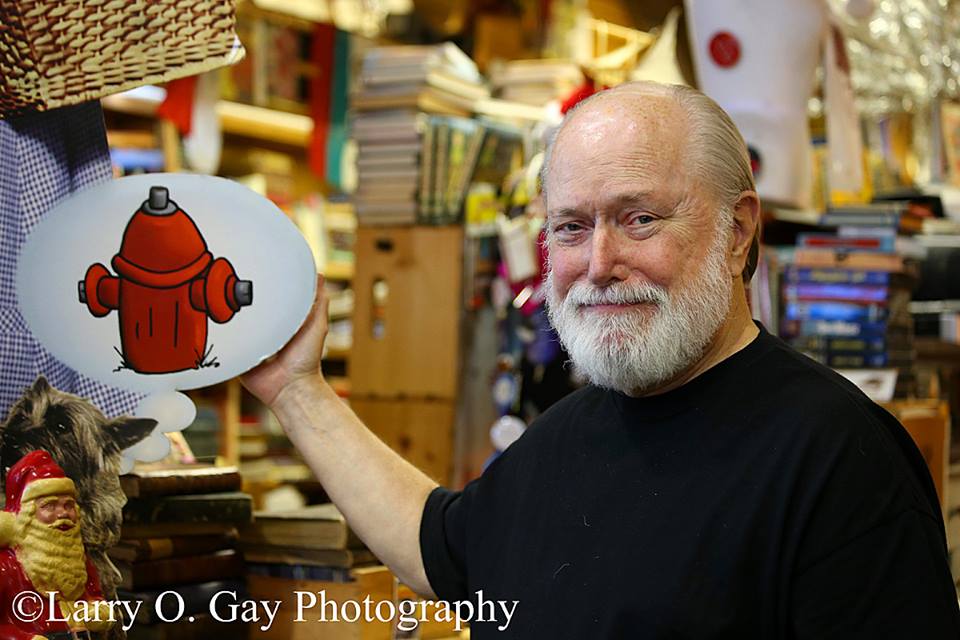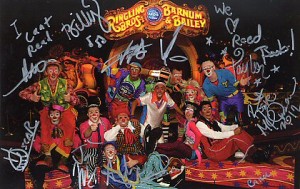Listen to Jim: http://jimreedbooks.com/mp3/bestbookrevieweverr.mp3
or read on…
The best way to review a book is to really, really look at a book…really, really experience the book. Want to know one way this can be done? Read on. Think this is something not worth knowing? Oh, go ahead and read on anyhow—you might surprise yourself, and me.
Let’s pick a book at random. Hmm, here’s a copy of ROBINSON CRUSOE by Daniel Defoe. This particular title falls into that rare category of BOOKS THAT HAVE NEVER BEEN OUT OF PRINT, in this case for centuries. Something to think about: If a book has lasted this long and people are still attracted to it, there must be something about it worth experiencing. The test of time guarantees you will probably learn something delightful or frightening that you don’t already know.
Pick up the book. Well, it’s not as heavy as it appears. It’s a 1930′s reprint printed on pulpy, light paper. Sniff the paper. It kind of smells like a fragrant but intriguing old memory.
Look at the paper. Even though it’s aged, it’s only faintly tinted. The pages are still crisp and intact and ready to be read. Check the hardback cover. Nice. It looks practically new, which means someone has taken good care of it. The print size is large and easy to follow.
Look at the publishing information. For one thing, we learn that the actual title of the book is THE LIFE AND ADVENTURES OF ROBINSON CRUSOE. If you do a little research you learn that this novel is based on an actual incident—there was a man marooned for years on a desert island who lived to tell about it!
Look: the book is illustrated by Frances Brundage, a very popular artist of the day who knew how to make you wish to turn the page and read further. And the publisher is Saalfield of Akron, Ohio, creator of many books for families and young people. CRUSOE, though action-packed, bloody and exciting, was always considered to be a tale for young people, as was HUCKLEBERRY FINN by Mark Twain. It is fashionable to keep these titles in the youth section of bookshops, even though the themes are very adult.
Oh, and this particular edition of CRUSOE has a beautifully color-illustrated dust jacket, depicting Robinson in hand-made garb trudging along, musket at the ready, full-bearded and shaded by a handmade umbrella—long before sunscreen was invented. The jacket also advertises other books that CRUSOE lovers might enjoy, such as BLACK BEAUTY, TREASURE ISLAND, PINOCCHIO, MOBY-DICK, ROBIN HOOD, KING ARTHUR…all still in print after generations.
Now, any good book detective will still examine this volume for other clues to its past—this being more exciting than treasure-hunting or metal detecting. If you examine old books carefully, you may come up with such things as love letters, pressed flowers, mustard stains, tobacco odor, old folding money, bills of laden, scribbled secret notes, beautiful bookmarks, matchbook covers, lapel pins, ticket stubs, etc., etc. It’s worth the search!
What about the genealogy of the book? Look for names written inside, dates jotted down, critical observations in the margins. This is like getting two books for the price of one!
Feel the texture of the pages as you turn them? This tactile act will become a part of your memory of the book. Not to mention your surroundings while reading. Look around and spot your favorite blankie, your cat, the stool you rest your feet on, that great painting you love so much, the dingy lampshade you keep meaning to replace…all this will stay with you, embedded in your sweet remembrance of great books past.
This concludes my book review, with one additional observation—take my word for it, ROBINSON CRUSOE is one heck of a good read and, unlike other reviewers, I will not spoil if for you by revealing anything else. You can grumble if you don’t like it, or you can re-read it on the assumption that you didn’t quite get it the first time. There’s something there to enjoy. Like treasure-hunting, you just have to keep digging and never, never give up
© 2013 A.D. by Jim Reed

